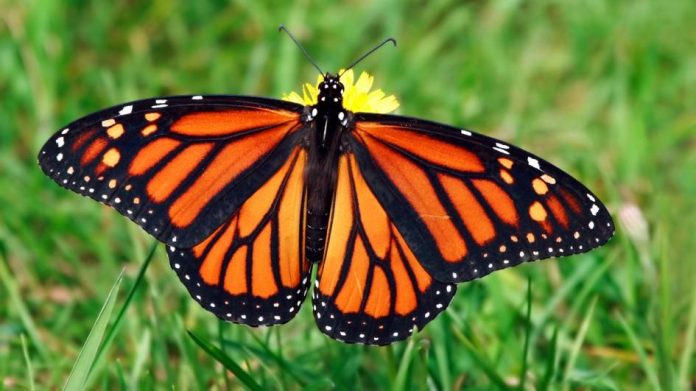The annual overwintering count of monarch butterflies shows that butterfly numbers fell by nearly one-third this year reversing last year’s recovery from historically low numbers.
Researchers report that this year’s population is down by 27 percent from last year’s count, and down by more than 80 percent from the mid-1990s. This year’s drastic decline is attributed in part to more extreme winter storms that killed millions of monarchs last March in Mexico’s mountain forests, where 99 percent of the world’s monarchs migrate for the winter.
“The monarch butterfly is still in really big trouble and still needs really big help if we’re going to save this beloved orange-and-black wonder for future generations,” said Tierra Curry, a senior scientist at the Center for Biological Diversity.
A recent study by the U.S. Geological Survey concluded that there is a substantial probability that monarch butterflies east of the Rockies could decline to such low levels that they face extinction. Researchers estimate the probability that the monarch migration could collapse within the next 20 years is between 11 percent and 57 percent.
“In addition to threats from more frequent and harsher weather events, monarchs are still severely jeopardized by the ever-increasing pesticides used with genetically-engineered crops, destroying their habitat,” said George Kimbrell, senior attorney at the Center for Food Safety. “We will continue to do everything we can to ensure monarchs have a future.”
The butterfly’s dramatic decline has been driven in large part by the widespread planting of genetically engineered crops. The vast majority of U.S. corn and soybeans are genetically engineered for resistance to Monsanto’s Roundup herbicide, a potent killer of milkweed, the monarch caterpillar’s only food. The dramatic surge in the use of Roundup and other herbicides with the same active ingredient (glyphosate) on Roundup Ready crops has virtually wiped out milkweed plants in the Midwest’s corn and soybean fields.
In the past 20 years, scientists estimate, these once-common, iconic orange-and-black butterflies may have lost more than 165 million acres of habitat — an area about the size of Texas — including nearly a third of their summer breeding grounds. Logging on the monarch’s Mexican wintering grounds is also an ongoing concern. Scientists have also identified threats to the monarch during the fall migration including lack of nectaring habitat and insecticides.















